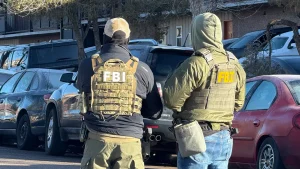The Christmas Eve stabbing incident at Grand Central Terminal underscores the ongoing concerns surrounding safety in the New York City subway system. The seemingly random attack, perpetrated by 28-year-old Jason Sargeant, left two individuals wounded – a 26-year-old woman with a neck laceration and a 42-year-old man with a slashed wrist. The incident unfolded in two separate altercations, beginning with an argument between Sargeant and the male victim on the stairs leading to the southbound entrance, followed by a confrontation with the female victim near a turnstile. The swift response by law enforcement led to Sargeant’s arrest and the recovery of the weapon. The charges against him include two counts of first-degree assault and two counts of first-degree reckless endangerment, along with several second-degree charges related to menacing, weapon possession, harassment, and disorderly conduct. This attack contributes to the growing apprehension regarding safety within the city’s transit network, coming on the heels of other violent incidents.
The Christmas Eve stabbing occurred within a larger context of escalating concerns regarding subway safety in New York City. Just days prior, a horrifying incident unfolded where a woman was tragically set on fire and killed on a subway train. Sebastin Zapeta, a 33-year-old undocumented immigrant from Guatemala, was apprehended and charged with murder and arson in connection with this brutal crime. These back-to-back incidents have intensified public anxieties about the safety of the subway system and reignited debates surrounding crime, immigration, and the effectiveness of current safety measures. The timing of the stabbing, occurring shortly before Christmas, further amplified the sense of unease and highlighted the vulnerability of commuters during the holiday season.
The timing of Governor Kathy Hochul’s social media post regarding improved subway safety, just hours after the tragic subway fire, drew significant criticism and sparked controversy. Her post, which highlighted decreased crime rates and increased ridership following the deployment of the National Guard to support subway safety initiatives, was deemed insensitive and tone-deaf by many, given the recent horrific incident. Critics argued that the post demonstrated a disconnect from the realities faced by commuters and minimized the gravity of the ongoing safety concerns. The backlash directed at Governor Hochul underscored the heightened public sensitivity surrounding subway safety and the demand for more effective measures to address the issue.
Tom Homan, former acting director of Immigration and Customs Enforcement and incoming border czar for then President-elect Trump, strongly condemned Governor Hochul’s post, characterizing it as deeply inappropriate in the wake of the subway tragedy. He further attributed some of the blame for the incident to the Biden administration’s immigration policies, which he criticized as lax and contributing to the presence of criminal aliens in the country. Homan’s remarks reflect a broader political debate surrounding immigration and crime, with some arguing that more stringent immigration enforcement is necessary to ensure public safety. This perspective often clashes with those who advocate for more comprehensive immigration reform that addresses the root causes of migration and provides pathways to legal status.
The recent attacks, including the Christmas Eve stabbing and the subway fire, have renewed calls for enhanced security measures in the New York City subway system. While Governor Hochul pointed to the deployment of the National Guard and the installation of cameras in subway cars as evidence of progress in improving safety, critics argue that more comprehensive and sustained efforts are needed. Suggestions for improvements range from increased police presence and improved lighting within stations to addressing the underlying social and economic factors that contribute to crime. The debate over how to best ensure the safety of subway riders remains complex and contentious, with various stakeholders offering different perspectives and solutions.
The recurring incidents of violence in the New York City subway system underscore the complex challenges facing the city in its efforts to ensure the safety and well-being of its residents and visitors. The Christmas Eve stabbing, following closely on the heels of the tragic subway fire, has intensified public anxieties and fueled ongoing debates regarding crime, immigration, and the effectiveness of current safety measures. While steps have been taken to enhance security, such as deploying the National Guard and installing cameras, much work remains to address the systemic issues that contribute to these incidents. The ongoing dialogue surrounding subway safety highlights the need for a multi-faceted approach that encompasses increased security, social programs, and a commitment to addressing the root causes of crime and violence.










